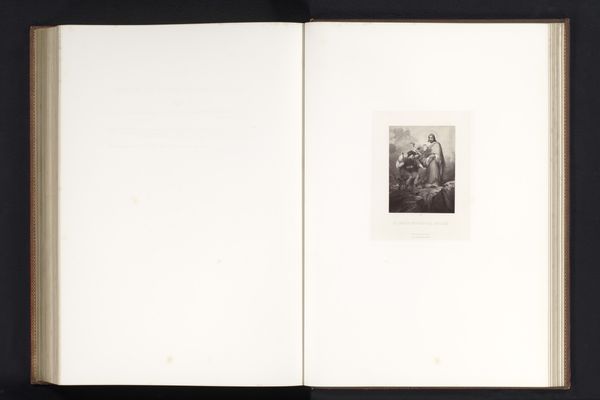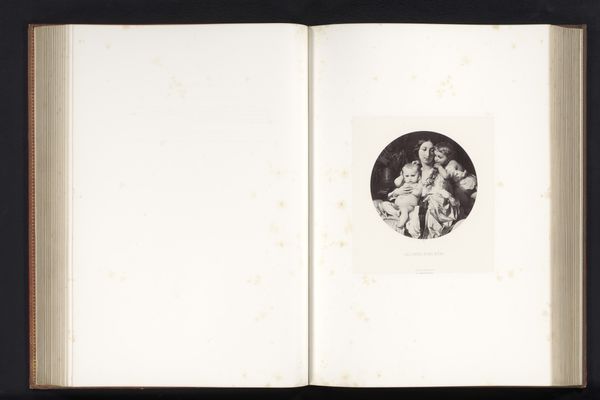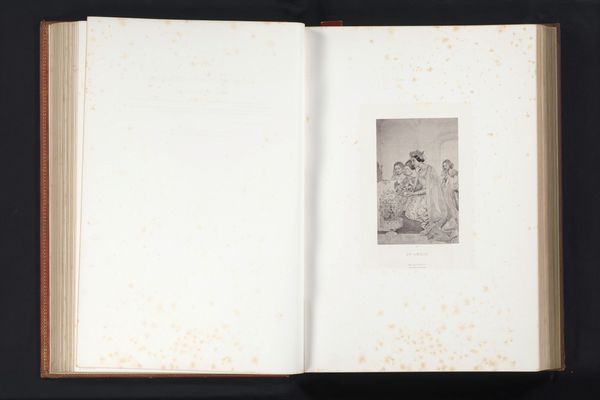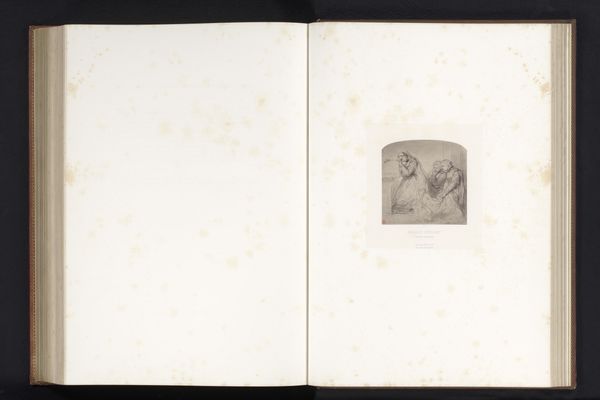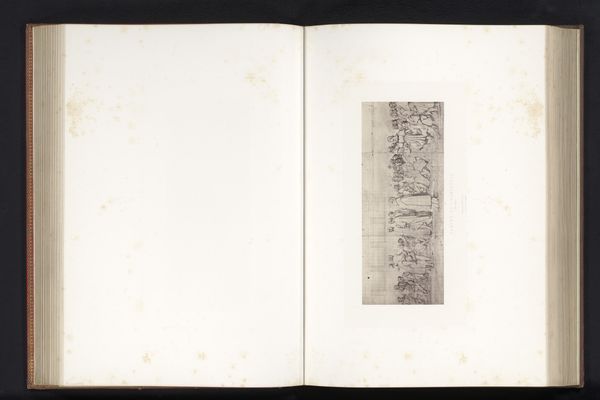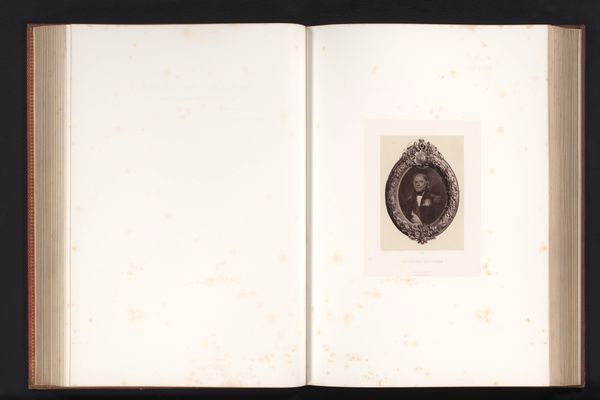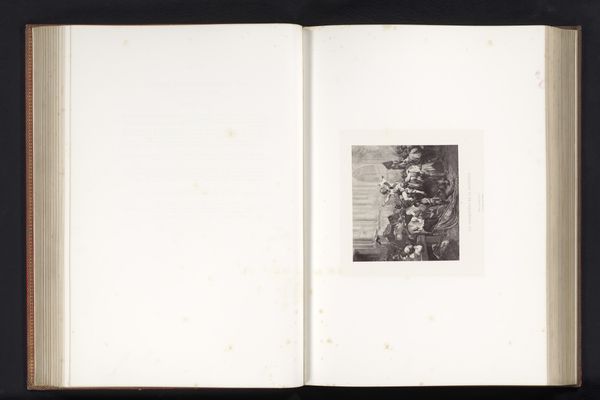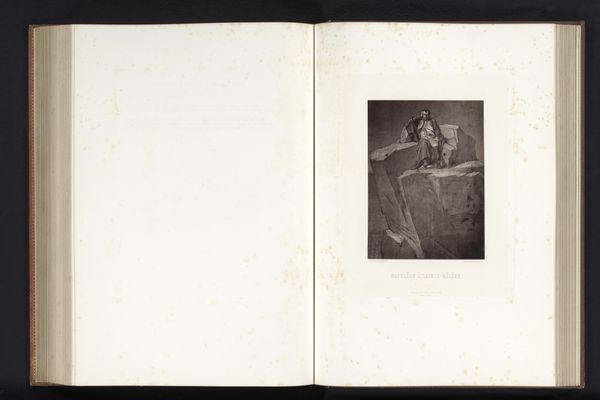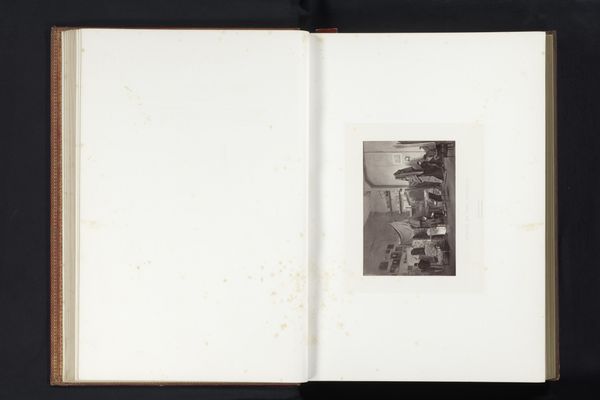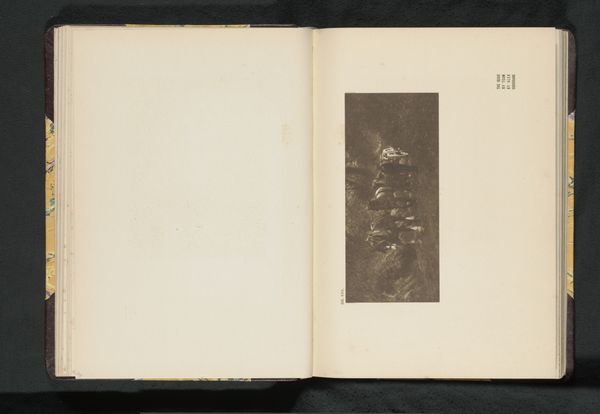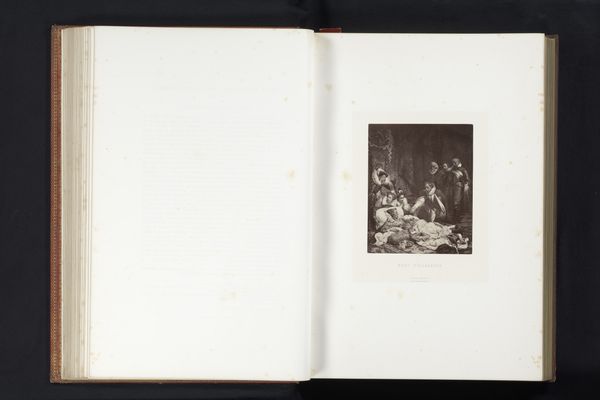
Fotoreproductie van een prent naar een schilderij van koning Karel I bespot door de soldaten van Cromwell door Paul Delaroche before 1858
0:00
0:00
Dimensions: height 108 mm, width 150 mm, height 182 mm, width 208 mm
Copyright: Rijks Museum: Open Domain
Curator: This photographic print, dating from before 1858, presents a reproduction of a painting titled "King Charles I Mocked by Cromwell's Soldiers" after Paul Delaroche. The print itself, made using photography, features a rendition of a tumultuous scene from history. Editor: My immediate response is that the work exudes tension, a sense of indignity captured in a chaotic tableau. The figures seem caught in a moment of raw emotion, amplified by the small scale and monochrome palette. It reminds me of a stage scene. Curator: Indeed. This is charged with symbolism. The depiction of Charles I’s humiliation by Cromwell's forces touches upon complex themes of power, regicide, and the upheaval of social order. The act of mockery challenges established hierarchies. Consider the weight of inherited authority versus the rising power of revolution. Editor: Absolutely. The image resonates on multiple levels, calling to mind archetypal themes of the fall from grace, injustice, and ultimately, resilience in the face of adversity. And observe the faces--I see contempt mixed with pity. Even in the supposed victors. Curator: I find it pertinent to contextualize this print within its time. It was produced during an era grappling with rapid social and political change and the growth of Romanticism, a moment interested in exploring and visualizing moments of intense human drama. The artist uses a Romantic lens to examine the relationship between politics, religion, and individual fate. Editor: From an iconographic perspective, light and shadow here function less as atmospheric effects and more as signifiers. The use of chiaroscuro to accentuate the figures arguably speaks to the ambiguous moral terrain of the conflict. Note how even in its small size, the intensity feels almost unbearable. Curator: Placing this reproduction within its historical context unveils a fascinating dialogue. As an early use of photography to document, it becomes a sign of increasing access to the dissemination of cultural values through technology, allowing for wide reach, beyond social barriers and class status. Editor: And in a way, it also embalms and carries the legacy of the dramatic scene and the moment to our current viewing. The photograph itself becomes part of its story now, further embedding those themes. Curator: Thinking about this photograph makes me think of how art captures and comments on societal tensions in compelling ways. Editor: For me, I am left wondering what symbols and archetypes we will choose to repeat in our current moment of disruption, now preserved by twenty-first-century technologies.
Comments
No comments
Be the first to comment and join the conversation on the ultimate creative platform.
